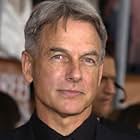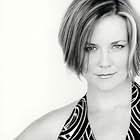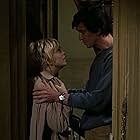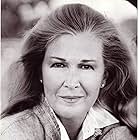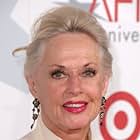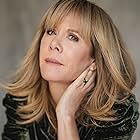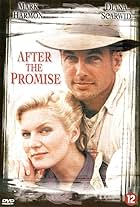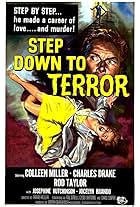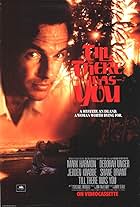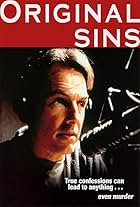Remake of Alfred Hitchcock's Shadow of a Doubt (1943).Remake of Alfred Hitchcock's Shadow of a Doubt (1943).Remake of Alfred Hitchcock's Shadow of a Doubt (1943).
Photos
Michael Ray Wisely
- Rick Saunders
- (as Michael Wisley)
Storyline
Did you know
- TriviaA remake of the same title released in 1943 directed by Hitchcock.
- GoofsAfter Charlie is rescued from falling off the outside stairs, and her uncle is standing as she drinks the hot drink, beyond him is an American flag, but it is a modern one, with fifty stars, whereas the flag back in 1953 had only forty eight.
- ConnectionsEdited into Hallmark Hall of Fame (1951)
Featured review
While I will be the first to accept that this remake does not have the craftsmanship of the earlier Hitchcock version, there are a few salient facets of the film that Hitchcock might consider to be an improvement over his version.
The first attempt at improvement that TV director Karen Arthur and teleplay writer John Gay introduced as a magical addition was the masked ballroom dance that opens the TV film with its handsome lead player Mark Harmon enchanting the elderly widow. In Hitchcock's version the dance is shown fleetingly (twice), but the emphasis is on the lead character Charles avoiding the cops in a small hotel. Both are interesting opening sequences. But Karen Arthur needs to be complimented on choosing a fascinating alternative. In fact, the opening sequence of Arthur's version is the strongest element of the TV film.
The second bit that is a startling difference between the two films is the insinuation of Arthur/Gay that Charles is not the real Charles but a masquerader while Hitchcock never seemed to dispute that it was the real Charles. Hitchcock even seemed to suggest a good child following a bicycle accident could develop into a devil with a distaste for wealthy widows.
The third bit is Arthur's decision to cast Tippi Hedren in the film. Now Tippi Hedren had acted in Hithcock's "The Birds" and Hitch was known to have had a crush on Ms Hedren, according to historians. Hitchcock himself loved to refer to actors in previous films in later screenplays (Hitchcock's "Rope" includes a flippant remark about Cary Grant and Ingrid Bergman in "Notorious"). Arthur seems to have followed the Hitchcock tradition in this casting.
The fourth bit are the actions of the widow in the train towards the end of the film. I thought Ms Arthur did well in developing the vulnerability of wealthy widows to beguiling male charms. Hitchcock downplayed this element and concentrated on the lead character--and hence the shot of the widow on the train was brief.
Though I liked Joseph Cotton in Hitchcock's film, I thought Mark Harmon's performance was not to be dismissed. All in all the film, Arthur's film is not better than the original but presents interesting new angles to the original.
The first attempt at improvement that TV director Karen Arthur and teleplay writer John Gay introduced as a magical addition was the masked ballroom dance that opens the TV film with its handsome lead player Mark Harmon enchanting the elderly widow. In Hitchcock's version the dance is shown fleetingly (twice), but the emphasis is on the lead character Charles avoiding the cops in a small hotel. Both are interesting opening sequences. But Karen Arthur needs to be complimented on choosing a fascinating alternative. In fact, the opening sequence of Arthur's version is the strongest element of the TV film.
The second bit that is a startling difference between the two films is the insinuation of Arthur/Gay that Charles is not the real Charles but a masquerader while Hitchcock never seemed to dispute that it was the real Charles. Hitchcock even seemed to suggest a good child following a bicycle accident could develop into a devil with a distaste for wealthy widows.
The third bit is Arthur's decision to cast Tippi Hedren in the film. Now Tippi Hedren had acted in Hithcock's "The Birds" and Hitch was known to have had a crush on Ms Hedren, according to historians. Hitchcock himself loved to refer to actors in previous films in later screenplays (Hitchcock's "Rope" includes a flippant remark about Cary Grant and Ingrid Bergman in "Notorious"). Arthur seems to have followed the Hitchcock tradition in this casting.
The fourth bit are the actions of the widow in the train towards the end of the film. I thought Ms Arthur did well in developing the vulnerability of wealthy widows to beguiling male charms. Hitchcock downplayed this element and concentrated on the lead character--and hence the shot of the widow on the train was brief.
Though I liked Joseph Cotton in Hitchcock's film, I thought Mark Harmon's performance was not to be dismissed. All in all the film, Arthur's film is not better than the original but presents interesting new angles to the original.
- JuguAbraham
- Mar 15, 2006
- Permalink
Details
- Release date
- Country of origin
- Language
- Also known as
- Hallmark Hall of Fame: Shadow of a Doubt (#40.3)
- Filming locations
- Production companies
- See more company credits at IMDbPro
Contribute to this page
Suggest an edit or add missing content



